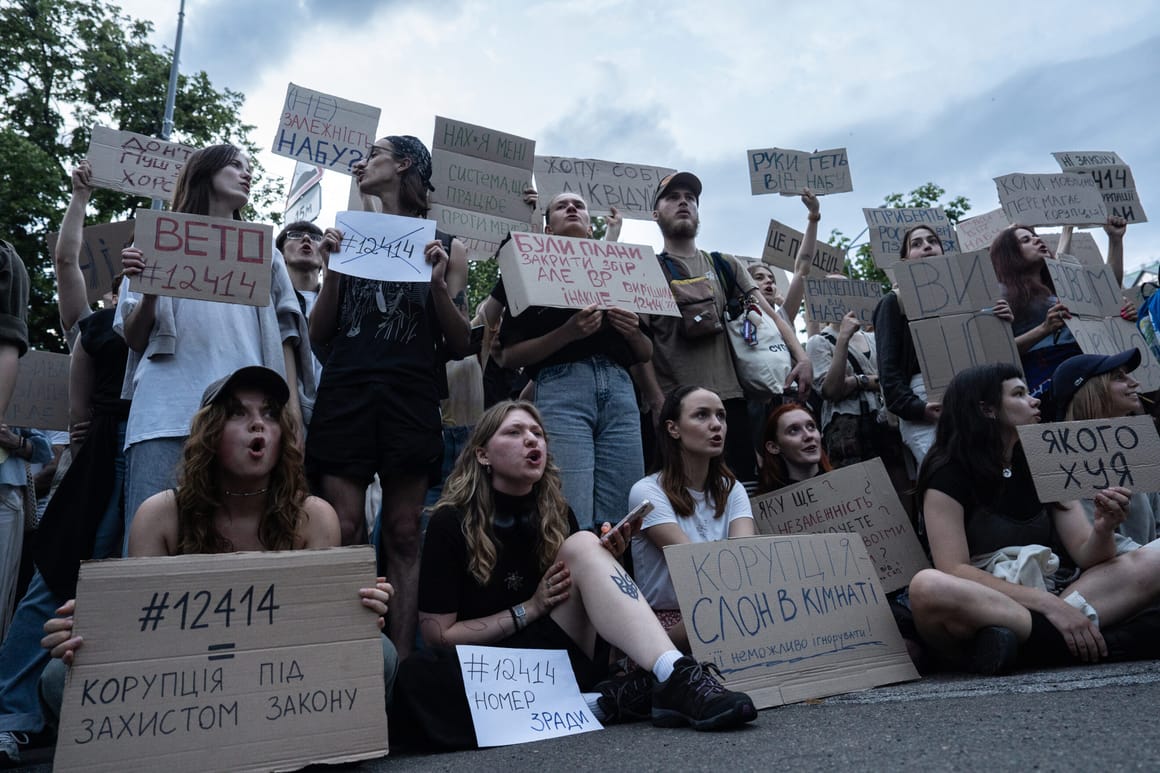Politics
Protests Erupt in Ukraine Over Controversial Anti-Corruption Law

Protests are intensifying across Ukraine in response to a new law that critics argue threatens the independence of key anti-corruption agencies. Demonstrators gathered in major cities including Kyiv, Lviv, Dnipro, and Odesa, as well as the frontline city of Kharkiv, following President Volodymyr Zelenskyy‘s signing of the controversial legislation. This law, which brings the National Anti-Corruption Bureau (NABU) and the Special Anti-Corruption Prosecutor’s Office (SAP) under government oversight, has raised alarms over potential government interference in their operations.
The protests erupted on March 15, 2024, just one day after Zelenskyy enacted the law. Demonstrators voiced their opposition, asserting that it undermines the very anti-corruption efforts that Ukraine has committed to in its bid for European Union membership. Zelenskyy responded to the mounting pressure from the public, various European governments, and the European Commission, stating that he had “heard the public opinion” and would work to address their concerns.
In a video address released on the evening of March 15, Zelenskyy acknowledged the protests and promised a new bill aimed at preserving the independence of anti-corruption institutions. “All the norms for the independence of anti-corruption institutions will be there,” he stated, emphasizing that he had listened to the concerns raised by the public.
The president’s assurance followed discussions with stakeholders affected by the law. He committed to presenting a new legislative proposal to the Ukrainian parliament that would strengthen the law enforcement system while addressing the current situation. Despite these assurances, many protesters remain skeptical.
“We need to see the text of the new law before we can trust it,” said Oleh Symoroz, a Ukrainian war veteran, on social media. “There’s no faith in Zelenskyy! We need to keep pushing.” This sentiment resonates among many demonstrators, who demand transparency and quick action to rectify the issue.
In light of the protests, some opposition lawmakers have urged citizens to call for an urgent parliamentary session to repeal the contentious law. The protests mark a significant moment in Ukraine’s political landscape, representing the first major anti-government demonstrations since the onset of Russia’s full-scale invasion in 2022.
European leaders have also expressed concern. They urged Zelenskyy to reaffirm his commitment to democratic values following the signing of the law. The controversy surrounding this legislation has raised questions about Ukraine’s ongoing efforts to align with European standards and secure its place within the EU.
As the situation evolves, the Ukrainian government faces the challenge of rebuilding public trust while navigating the complexities of anti-corruption reform. With protests showing no signs of abating, the coming days will be critical in determining how Zelenskyy addresses the demands of the citizens and international partners alike.
-

 Top Stories3 months ago
Top Stories3 months agoTributes Surge for 9-Year-Old Leon Briody After Cancer Battle
-

 Entertainment4 months ago
Entertainment4 months agoAimee Osbourne Joins Family for Emotional Tribute to Ozzy
-

 Politics4 months ago
Politics4 months agoDanny Healy-Rae Considers Complaint After Altercation with Garda
-

 Top Stories4 months ago
Top Stories4 months agoIreland Enjoys Summer Heat as Hurricane Erin Approaches Atlantic
-

 World5 months ago
World5 months agoHawaii Commemorates 80 Years Since Hiroshima Bombing with Ceremony
-

 Top Stories3 months ago
Top Stories3 months agoNewcastle West Woman Patricia Foley Found Safe After Urgent Search
-

 Top Stories5 months ago
Top Stories5 months agoFianna Fáil TDs Urgently Consider Maire Geoghegan-Quinn for Presidency
-

 World5 months ago
World5 months agoCouple Convicted of Murdering Two-Year-Old Grandson in Wales
-

 World5 months ago
World5 months agoGaza Aid Distribution Tragedy: 20 Killed Amid Ongoing Violence
-

 World5 months ago
World5 months agoAristocrat Constance Marten and Partner Convicted of Infant Murder
-

 Top Stories4 months ago
Top Stories4 months agoClimbing Errigal: A Must-Do Summer Adventure in Donegal
-

 Top Stories4 months ago
Top Stories4 months agoHike Donegal’s Errigal Mountain NOW for Unforgettable Summer Views









